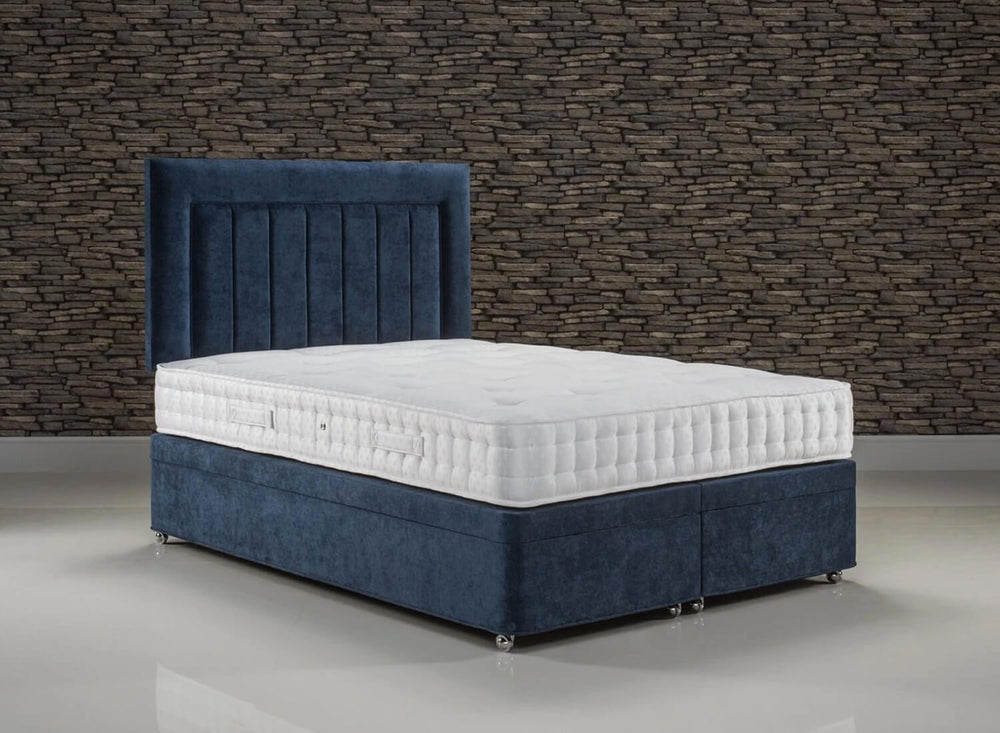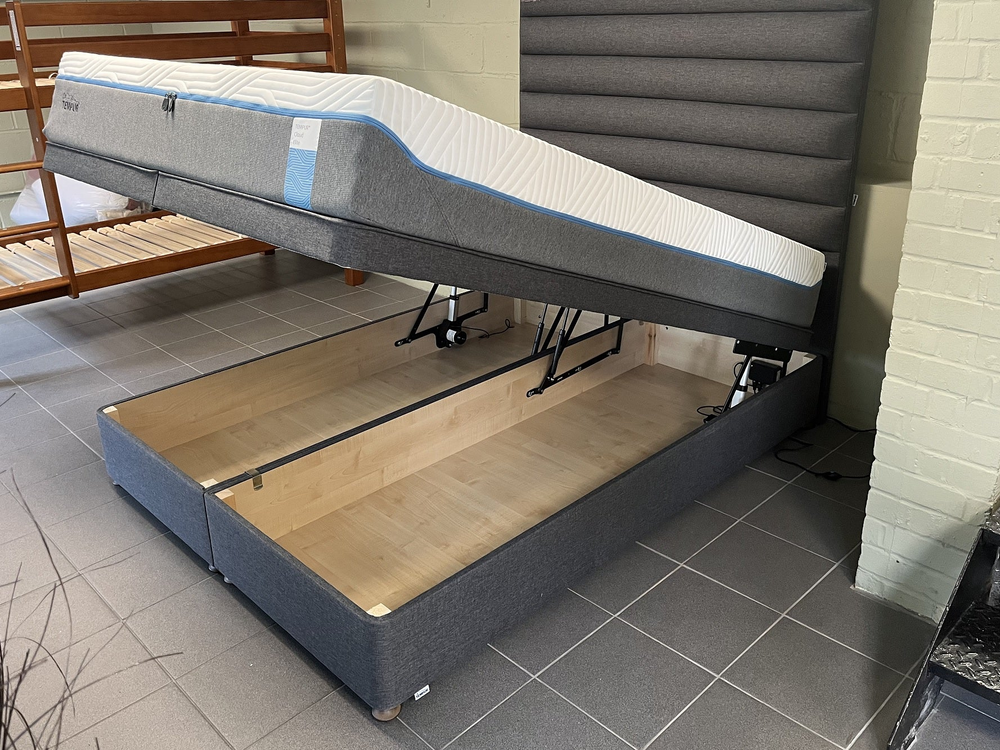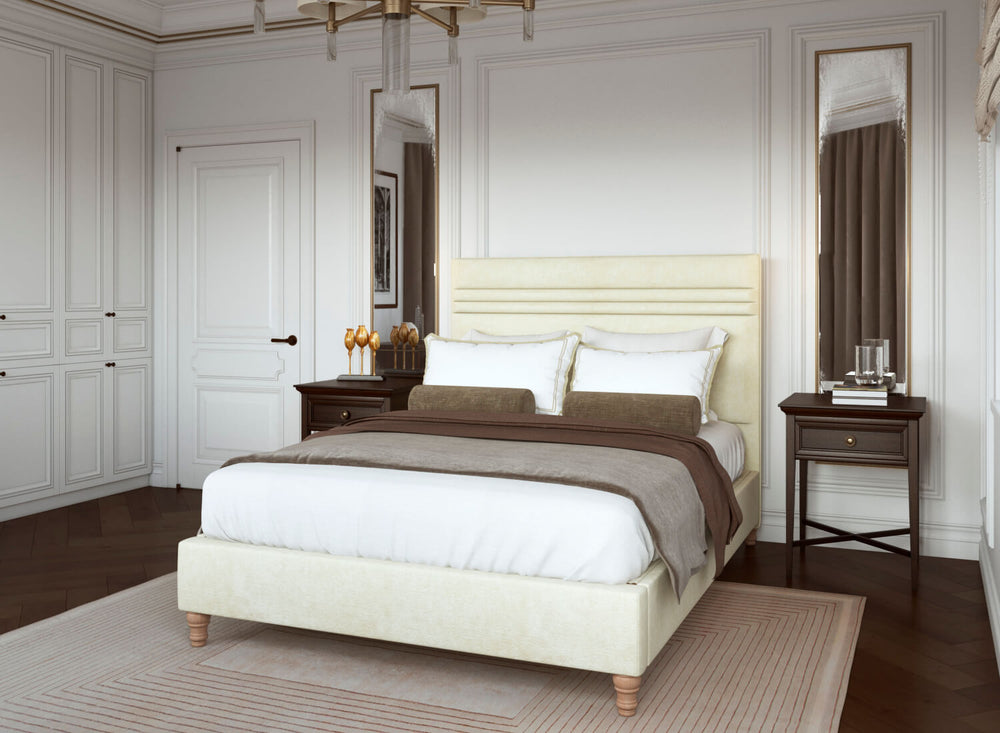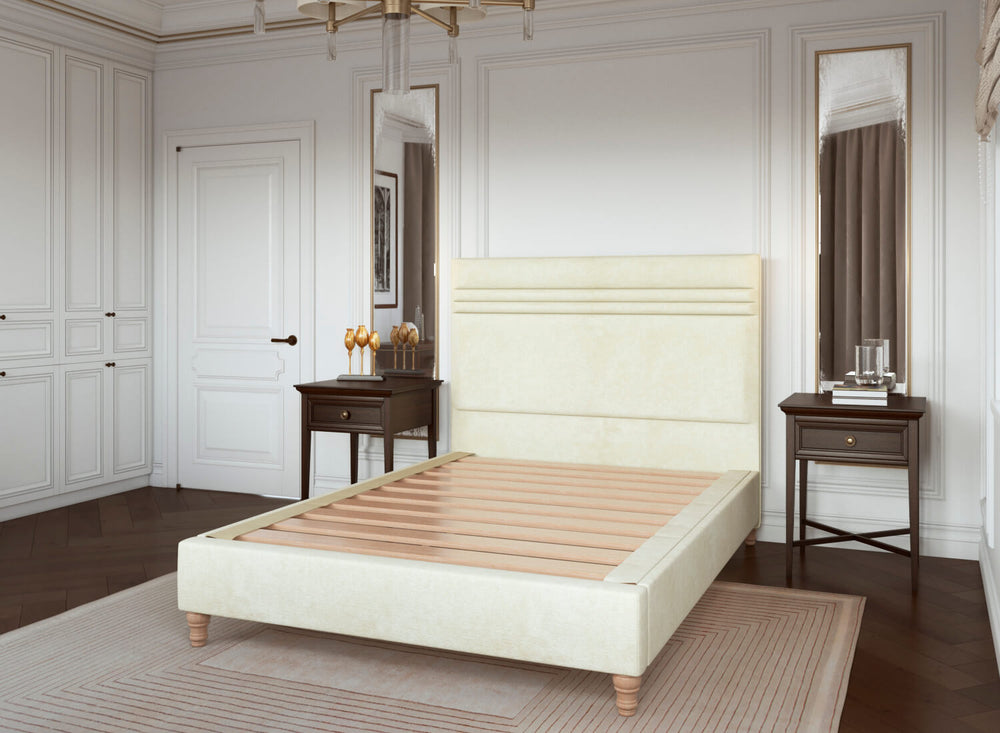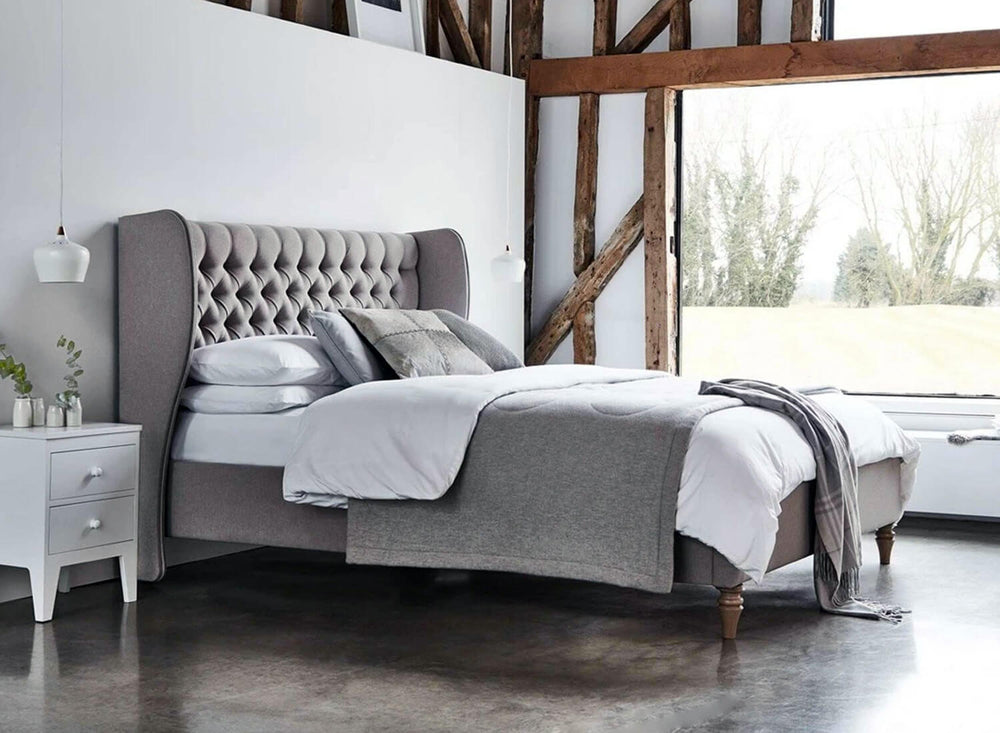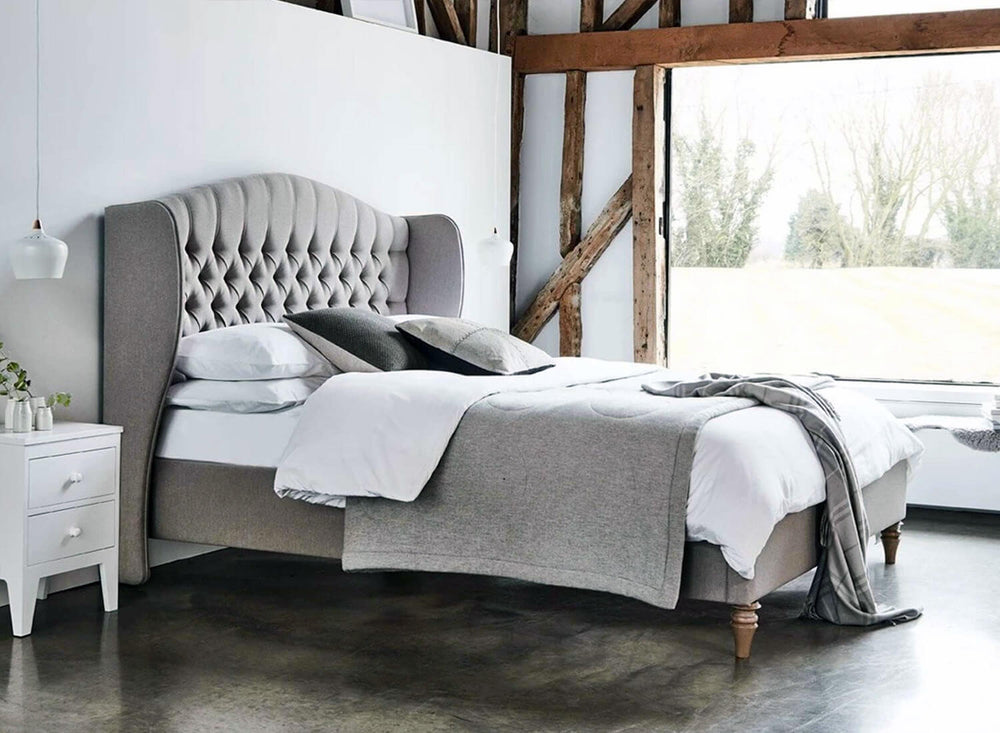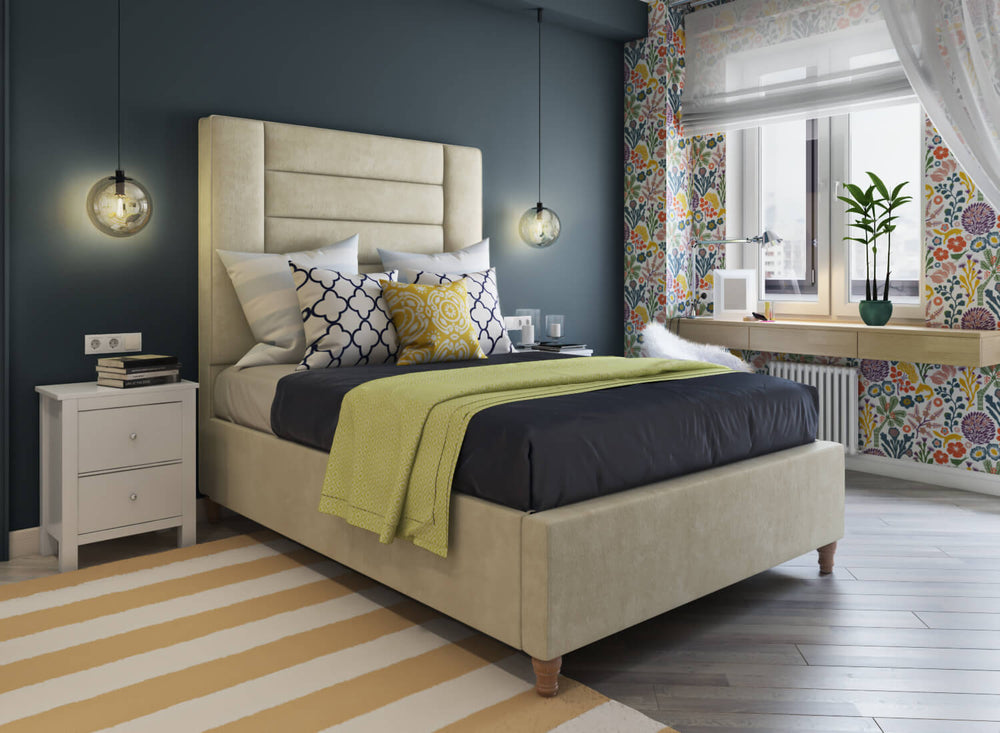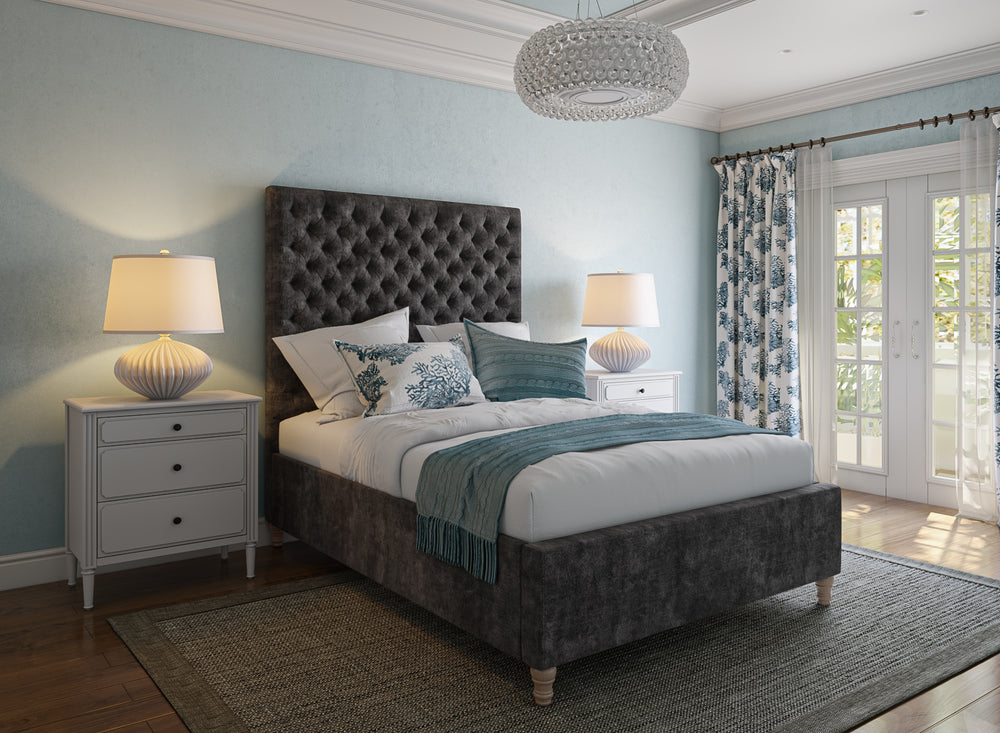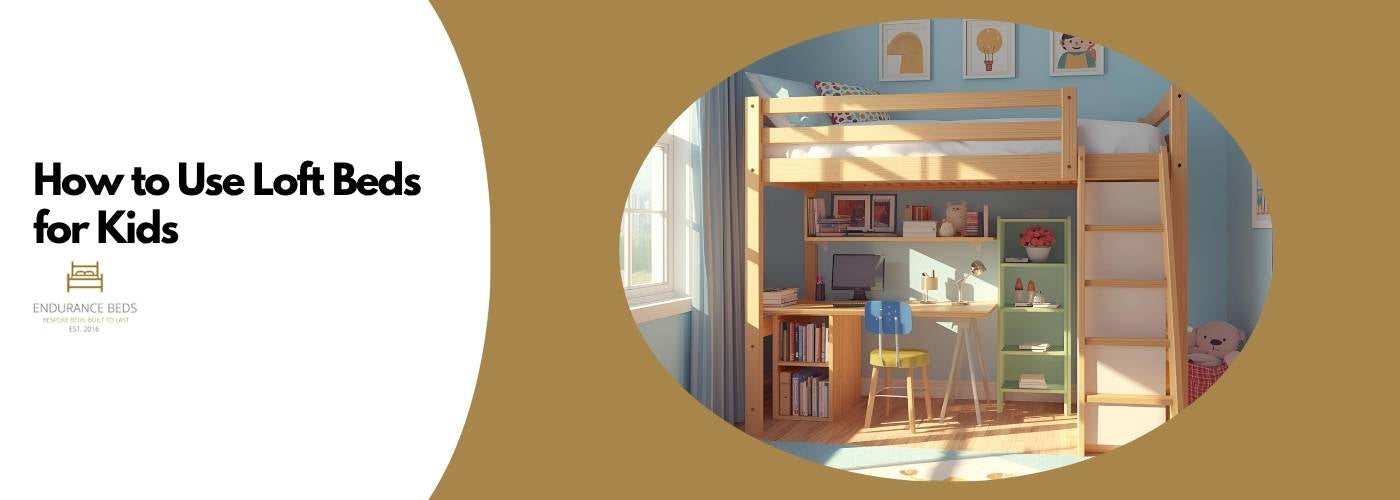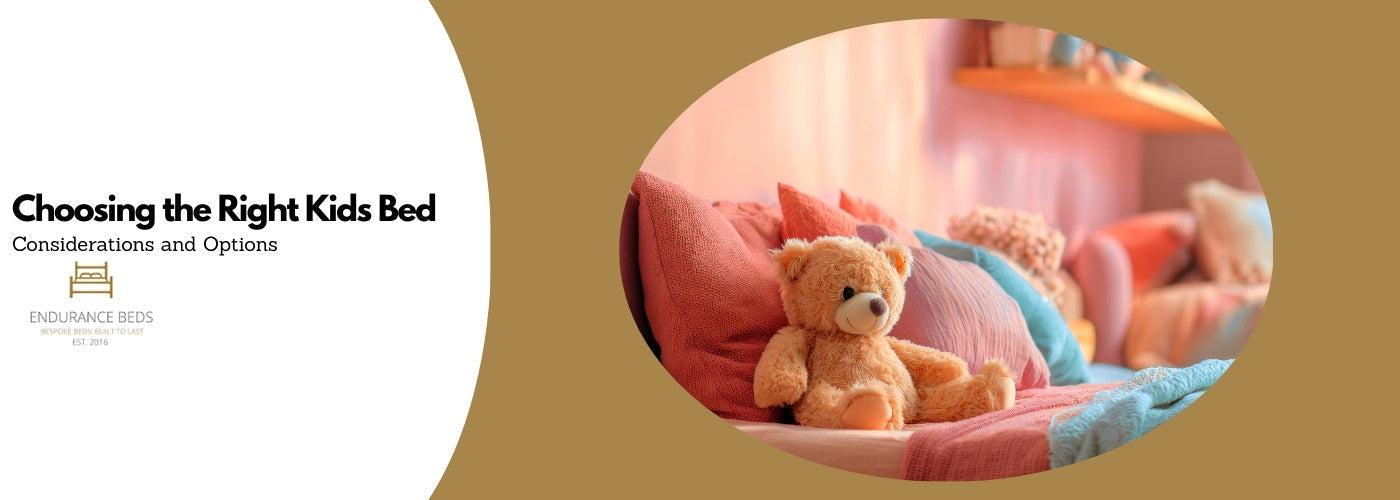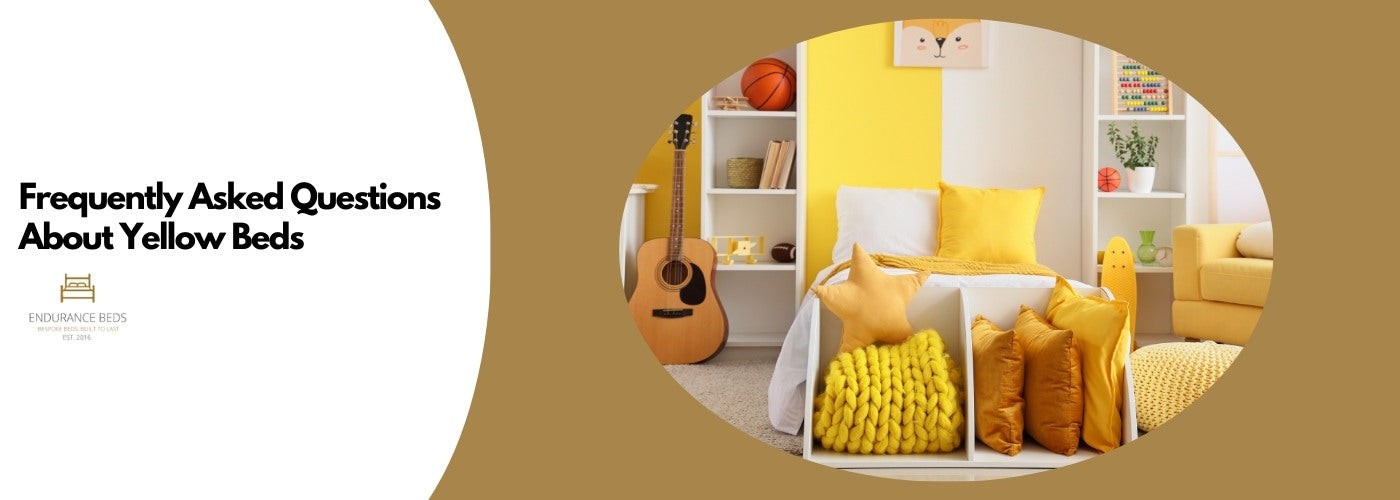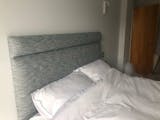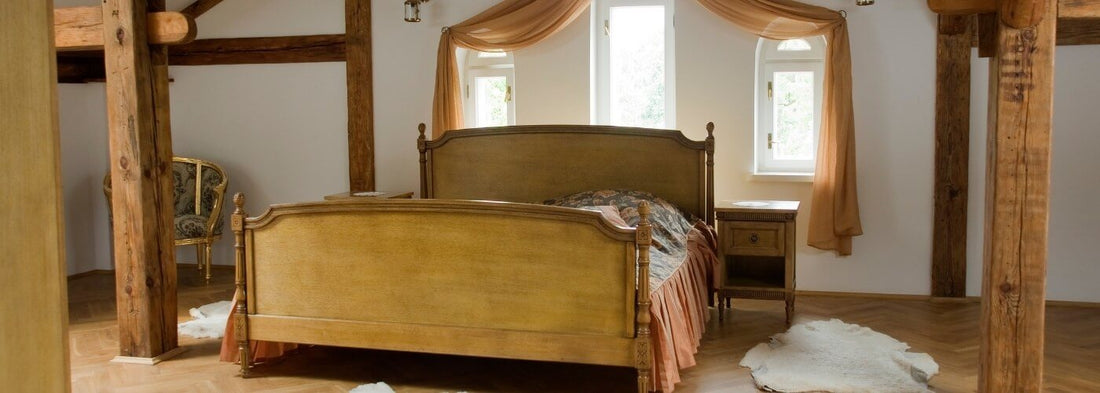
Sleeping on a comfortable mattress is something we take for granted today. Mattresses should be replaced every seven to ten years, according to the Better Sleep Council, to ensure optimum comfort and support. Based on how you're feeling after a night's sleep, you'll know when it's time to buy a new one. However, mattresses weren't always the luxury items we know today. In this article, we take a look at the evolution of beds into luxury bespoke furniture.
When were mattresses first made?
Spare a thought for our distant ancestors, who slept on mattresses made of broad-leaved grass, mixed with layers of ash. Archaeologists made the remarkable find of the world's oldest bed at the Border Cave in the Lebombo Mountains of South Africa.
The primitive beds, dated by modern technology as being 200,000 years old, were clustered around a hearth. Ash was used as a base to inhibit the movement of insects such as ticks, according to the Evolutionary Studies Institute. The older grass bedding was burned to destroy pests and the ashes used as a base for new beds.
Prior to this incredible find in August 2020, the earliest known mattresses dated from 77,000 years ago. Made of alternate layers of rushes and reeds, with blankets of grasses and leaves, they were found in a rock shelter known as the Sibudu Cave in Kwa Dukuza, South Africa.
The ancient Homo Sapiens who used the mattress slept under plants that naturally repelled mosquitos and other insects. Even our primitive ancestors didn't want bed bugs!
When did people first raise mattresses off the ground?
In around 3000 BC, the most eminent civilisation in the Mediterranean world, the ancient Egyptians, made wooden beds that provided a raised surface for their mattress. People of many different cultures began raising their mattress off the ground, both for greater comfort and to protect themselves from pests, such as snakes.
Wealthy citizens had bespoke beds crafted from ebony and often decorated with precious jewels. By this time, the mattresses were usually made from wool, as sheep had been domesticated. The bedding was commonly made from linen. Some had a raised head support, made from wood or stone, as the base for early pillows.
When did comfort become a greater priority?
The evolution of beds into luxury bespoke furniture began around 2,700 years ago, in one of the most advanced societies in the world.
From around 700 BC, in Ancient Greece, people prioritised comfort above all else in the construction of beds and other furniture. They invented the kline, a sofa that doubled as a day bed. It resembled a couch with a raised headrest. People used them for reclining and sleeping.
Ordinary people would have one multi-purpose kline, but the wealthy Greeks had several for different purposes. They would lounge about on one, sit and dine on another and sleep on a third. They were upholstered with rich material for extra comfort and decorated ornately.
In Ancient Rome, from around 625 BC, comfort became a priority when it came to beds. Their raised bed frames, often made of ivory or metal, were so high they sometimes needed a ladder to reach them. The mattress was commonly stuffed with hay or reeds for poorer people. It was supported by string or rope so it wasn't lying on a hard bed frame.
Wealthy Romans often had bespoke mattresses, painstakingly stuffed with thousands of feathers or with wool. They had many layers of blankets and sheets for extra comfort. Beds served as a place to socialise, rather than just being used for sleeping. They were often the centre-piece of the room.
Did anyone still sleep on the floor?
Unlike the Europeans, people in the eastern world - including China, Japan and Korea - didn't raise beds off the floor at this time.
The Chinese invented the kang bed, with a base of bricks or clay. It had a fireplace at one end with a chimney. The bed also had built-in flues underneath. When the fire was lit, they conducted hot air under the bed to keep not only the sleeping person warm, but the room too.
What were Medieval beds like?
During the Medieval period, beds were relatively simple for the general population. People favoured wooden beds, consisting of a stuffed mattress either on top of a frame or in a "bed box".
In the 12th century, beds for the wealthy in mainland Europe and the UK became much more ornate. Ornate bed frames were decorated with carvings, paintings and inlay. The mattresses and bedding were often embroidered. Mattresses stuffed with down became more popular.
Four-poster beds were invented in Austria in the 15th century. People began to hang curtains round their bed to keep out insects and draughts. Initially common practice for lords and ladies, it spread to the general population later on. Curtains were useful for extra privacy when several people shared a room.

Product: Yaxham Wooden Bed Frame
The evolution of beds into luxury bespoke furniture
In the 16th century, beds became more decorative and larger. One famous Elizabethan bed in England is the Great Bed of Ware, measuring 10 ft 11 ins square. It is one of the Victoria and Albert Museum's finest treasures. It was made for an inn in Ware, Hertfordshire, to attract people travelling through
In the 17th and 18th centuries, true luxury beds peaked for the wealthy. They served as a status symbol and were draped in expensive, elaborate curtains. King Louis XIV of France, who reigned for a record 72 years, reportedly had 413 beds!
Mattresses were transformed in the 1870s with the invention of coil springs for added comfort. At this time, metal frames were more common. For the first time in history, beds were mass produced, making them more accessible for everyone.
More companies began making well upholstered beds with made to measure mattresses. Choosing a mattress became about preference and comfort, with people able to choose whether they wanted a firm mattress a soft one, or any variation in between.
This remains the case today, with customisable beds and mattresses using materials such as memory foam to give people the perfect sleep experience.
There has never been a greater choice of luxury bespoke beds and mattresses, ensuring comfort for everyone. Contact Endurance Beds to see our wide selection of beds, mattresses and other bedroom furniture to suit all tastes. We offer free UK delivery on all orders.

Nicholas Forth

Director
Nick has put his 15 years of industry expertise into his blog posts. With the goal of making customers more informed, he provides insight into bed design, durability, and the best choices for different lifestyles and needs. His writing combines technical knowledge with practical advice, helping readers understand what really matters when choosing a bed or mattress. Whether breaking down material differences, exploring trends in bedroom design, or sharing tips on maximising comfort, he ensures every post is both educational and easy to follow.

